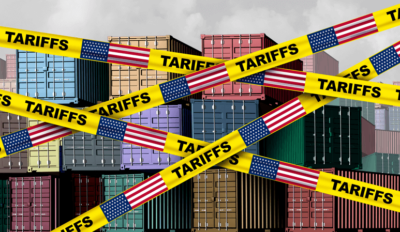AI and Car Dealerships: A Closer Look at the Changes

Artificial intelligence—or AI—isn’t just a buzzword tossed around at tech conferences anymore. As adoption grows, AI in the automotive industry is becoming a real factor in day-to-day dealership operations. It’s showing up in more places than many of us might realize. From digital marketing and lead follow-up to inventory management and F&I, AI is helping stores work smarter, not just harder.
But let’s be honest—there’s still some skepticism out there. Is this just another shiny tool? Is it going to disrupt my process—or worse, my people? Is it even worth the time to figure it out? A recent report found that 95% of dealers believe AI will be critical to their future success—with 43% rating it as “very important” and another 52% as “important.”
This blog takes a closer look—without the hype. This is not a technical manual, just a real-world perspective on what’s happening now, what’s coming next, and what dealership leaders should consider as AI becomes part of the retail landscape.
In this article
What AI Is—and Why It Matters in Automotive Retail
In simple terms, AI refers to software systems that can analyze data, learn from patterns, and make decisions or automate tasks with minimal human input. In a retail automotive setting, that could mean predicting which customers are most likely to buy, adjusting pricing based on market shifts, or matching a buyer with the right lender in seconds.
What makes AI in the automotive industry especially relevant is that it helps dealerships do more with the data we already have. From online shopper behavior to historical trade appraisals, AI turns all that raw data into something actionable—something your team can use to move deals forward. Put simply, AI is about surfacing insights that would take a human a lot longer to figure out.
One important note: when people talk about AI in dealerships, they’re often referring to machine learning—a specific type of AI that gets smarter over time. So when your pricing tool adjusts automatically as local inventory shifts, or your CRM starts flagging which internet leads to prioritize, that’s machine learning doing its job.
Importantly, AI isn’t here to replace your people. It’s here to give them better tools. Think of it like having a second set of hands behind the scenes—flagging opportunities, streamlining the noise, and freeing your team to focus on the conversations and relationships that actually close deals.
AI in Sales and Lead Management
If there’s one area where AI is already making a dent, it’s sales—and specifically how you handle internet leads. These days, most modern CRMs and lead platforms go beyond storing contact info. They analyze behavior—what vehicles a shopper looked at, how many times they visited your site, which tools they used (like payment calculators or trade-in forms), and how long they spent engaging.
That information helps the system prioritize leads based on buying intent. Instead of treating every lead like a fire drill, your team can spend time on the ones most likely to close.
Let’s say a shopper visits your website four times in one week, looks at two specific truck models, and spends five minutes using your payment calculator. AI sees that pattern and flags the lead as high intent—so your team knows to prioritize it.
This is one of the clearest examples of how AI for car dealerships can help sales teams operate more strategically, using real-time customer behavior data to guide outreach and improve efficiency. Dealerships using AI-powered lead scoring have reported 10–20% faster response times and a measurable lift in closing ratios on high-intent leads.
On top of that, AI-powered chatbots are handling basic website conversations 24/7. They’re answering inventory questions, booking test drives, and even pre-qualifying customers—without needing someone in the BDC to respond manually. These tools don’t replace people—they extend your team’s reach, especially after hours.
AI in Marketing and Customer Engagement
Marketing has also gotten a major upgrade. Instead of blasting the same message to every name in your CRM, AI helps tailor content to what each shopper is actually interested in.
A customer researching three-row SUVs will see different offers than someone cross-shopping used trucks. For example, if someone visits a certified pre-owned CR-V listing multiple times, they might be retargeted with display ads showing that exact model and incentive offers.
If a lease customer is approaching the end of their term, AI can flag them and trigger a campaign with tailored lease renewal options. That level of personalization isn’t just helpful—it gets results.
AI-driven tools can also use your first-party data—from your CRM, DMS, or website activity—to retarget in-market shoppers with dynamic ads. These ads update automatically based on real-time actions like VDP views, favorited vehicles, or even starting a pre-approval form without submitting. You’re reconnecting with shoppers at the exact point in the funnel where it matters most.
Some dealerships using AI-driven targeting have seen a 15% lift in conversion rates after implementing Google Vehicle Ads, which use AI to match vehicles with in-market shoppers.
And it’s not just targeting. AI can adjust ad spend automatically, shifting dollars to the best-performing campaigns or creative without waiting for a manual review. That means better use of budget and better leads walking through the door.
AI in Inventory and Pricing Decisions
AI in the automotive industry is also starting to play a bigger role in two key areas that directly impact dealership profitability: pricing and inventory management.
Let’s start with pricing. AI-powered tools analyze massive amounts of real-time data—local demand, competitor listings, auction trends, aging inventory, and even historical grosses—to help you set prices that move metal without giving away front-end.
Some of these tools cut pricing decisions down from hours to minutes and help stores hold more gross by staying dialed into what the market will bear.
On the inventory side, AI helps you stock smarter. By analyzing past sales, regional demand, and vehicle turn times, these tools can forecast what’s likely to sell—and how fast. That kind of insight helps tighten up your days-to-sale metrics and avoid stocking the wrong units just because they’re available. That’s especially useful when deciding what to bring in at auction or which trades to retail vs. wholesale.
AI can even estimate depreciation curves, helping you make better decisions on used car pricing and aging policies.
It’s worth noting that AI is also starting to appear in service—not just parts forecasting, but predictive maintenance reminders and upsell suggestions based on vehicle history. It’s still early days, but there’s upside here for fixed ops too.
AI in F&I and Compliance
AI is also changing how deals get structured in the F&I office. Some credit platforms now use AI to match buyers with lenders automatically—based on their credit tier, the deal structure, and lender program fit. Instead of submitting to five banks and waiting, the platform recommends the lender most likely to approve the deal.
For example, let’s say a customer applies with thin credit. The AI might flag a subprime lender with a higher likelihood of approval—saving time and moving the deal forward faster.
AI also helps clean up deal jackets before they go out for funding. It can flag missing signatures, compliance red flags, or inconsistent info before the deal ever gets to the bank. That means fewer rewrites, faster funding, and less time chasing paperwork.
Some F&I tools also use AI to suggest aftermarket products based on a customer’s profile—giving your managers better guidance on what to present and when. That kind of support can sharpen the desking process and make it easier for your team to pencil deals that meet both customer needs and store objectives.—giving your managers better guidance on what to present and when.
Challenges and Considerations
As with any technology that promises greater efficiency, AI comes with important considerations that dealership leaders should keep in mind.
First, AI is only as good as the data it’s working with. If your CRM is full of outdated records, or if systems don’t talk to each other, you’re not going to get clean insights. Make sure your data is solid before expecting great results.
Second, over-automating the customer experience can create friction. Shoppers still want to feel like they’re dealing with real people. If AI tools start replacing every touchpoint with generic responses, it can hurt trust. AI should support your people—not sideline them.
Team adoption matters, too. The best platform in the world won’t help if your sales or F&I teams don’t understand how to use it—or don’t trust it. That means training, showing value, and tying AI features to the things your team already cares about: closing deals faster, hitting goals, and making better calls.
And finally, don’t forget about compliance. Any tool handling customer data needs to follow the rules. Make sure your vendors are clear about how data is stored and used, and don’t be afraid to ask tough questions.
The Bottom Line: AI Is Here—How Will You Use It?
AI isn’t coming. It’s already here. And for many dealerships, it’s already part of how leads get worked, deals get structured, and marketing gets done.
It’s showing up in lead scoring, in ad targeting, in pricing recommendations, and in F&I decisions. In many cases, these tools are already baked into the platforms you’re using—you just may not realize how much work they’re doing under the hood.
More than 80% of dealers surveyed said they’re either already using AI, in the process of implementing it, or planning to do so in 2025.
Whether you’re just starting to explore AI for car dealerships or already using it in parts of your operation, the important thing is to keep learning.
Final Thought
AI in the automotive industry isn’t about taking the wheel away—it’s about helping your people drive more efficiently.
The dealerships that will lead in the next few years aren’t the ones with the flashiest tools—they’re the ones using tools like AI for car dealerships to strengthen the fundamentals: good people, great processes, and a customer experience that builds long-term loyalty.
The question isn’t whether AI belongs in the dealership—it’s how you’ll use it to support your people, serve your customers, and keep moving forward.
AI isn’t replacing hustle—it’s sharpening it. Dealerships that lean in now won’t just stay ahead—they’ll be the ones setting the pace.
AI in Dealerships: 5 Things Happening Right Now
- Smarter lead scoring in your CRM
- Dynamic pricing recommendations for used inventory
- Personalized ads that adjust based on shopper behavior
- AI lender matching in F&I tools
- Chatbots that book appointments and answer FAQs after hours



